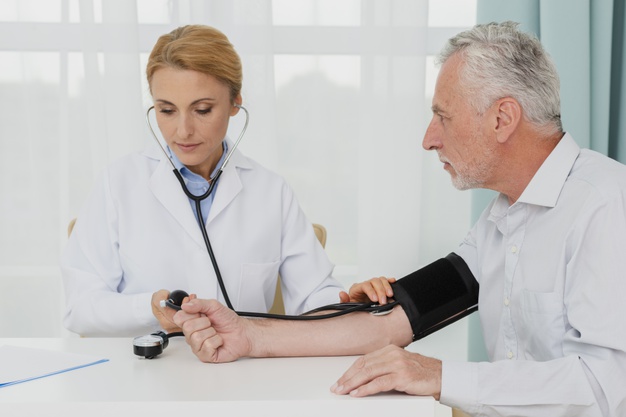What is Blood Pressure Testing to start off with?
Taking a blood pressure test is a simple method to check whether a patient’s blood pressure is too high or low. The term blood pressure is used to describe the strength at which your blood pushes on the sides of your arteries while it is being pumped around the body.
Having high blood pressure, which is also known as hypertension, can strain the arteries and organs in a person’s body. This can increase the risk of an individual having a heart attack or stroke. Low blood pressure, also known as hypotension, on the other hand, isn’t as dangerous but it can cause dizziness and fainting depending on the person.
Taking a blood pressure test is the only way to see exactly whether or not your blood pressure is too high or low as most people won’t show any clear signs or symptoms. Blood pressure tests last less than a minute and taking one could help to save your life.
When Should You Get Your Blood Pressure Tested?
If you are worried that you have low or high blood pressure you can get it tested at your local GP. Some pharmacies also offer blood pressure tests and at NHS Health Check appointments which are typically offered to adults aged between 40 and 74. You can even get your blood pressure checked at home, more on this below, if you own a digital blood pressure monitor or at your workplace if there is one provided.
A home blood pressure monitoring system can be purchased and are often similar to the ones that you are familiar with at the GP.
What this means is that you can measure your blood pressure at home and keep records of it to see what your daily activities contribute to your blood pressure and give an indication of what you may need to change if it is too high or too low.
The NHS recommends that every adult over the age of 40 should have their blood pressure tested every 5 years at least so that any problems can be detected before they develop further. People who have been already diagnosed with high or low blood pressure and people who are at high risk of developing either may need to have frequent tests to monitor any changes or developments.
Testing Your Blood Pressure at Home
Testing your blood pressure at home can actually give a more accurate reading of your blood pressure. This is because you are in an environment you are comfortable in and not at a clinic or GP surgery which can make some people nervous/anxious and can affect the results. Doing the testing at home also allows you to monitor your condition more closely and easily in the long term.
There are many varieties of blood pressure monitors you can buy on the market for a relatively low cost. It is important that you purchase monitors that have been tested properly so that you can be sure that you are getting accurate readings. Refer to the British Hypertension Society if you feel you need to have your blood pressure tested at home as they provide detailed information about validated blood pressure monitors that you can purchase.
How Blood Pressure Tests Work
Traditional blood pressure testing is usually performed using a device called a sphygmomanometer. This device is typically made up of a stethoscope, blood pressure cuff and also a pump and dial. While these are widely used by most GPs and clinics, some blood pressure tests are performed automatically by devices that use sensors to detect vibrations and digital displays.
The optimal position for testing a patient’s blood pressure is to have them sit down on a chair which supports their back and have their legs straight. The patient should then roll up their sleeves (or remove any long-sleeved clothing) if they are wearing clothes with long sleeves. This allows the blood pressure cuff to be placed around their upper arm which is the standard area for blood pressure to be tested.
Patients should be advised to relax and avoid chatter while the test is being carried out so that the results are as accurate as possible.
The first step to test a patient’s blood pressure with a sphygmomanometer is to have them hold out one of their arms so that it is at the same level as their heart. The cuff is then placed around their chosen arm which should be supported by something to prevent muscle fatigue and to ensure that the results from the test are as accurate as possible.
The second step is to pump the cuff that has been placed around their arm up to restrict the blood flow. This usually causes some discomfort in the patient but it is necessary and only lasts for a few seconds.
The third step is to slowly release the pressure in the cuff while using a stethoscope to listen to the pulse of the patient.
The final step is to record the pressure in the cuff at two points as the blood flow starts returning to the patient’s arm. The measurements that are recorded are used to give the patient’s blood pressure reading. The patient can then find out their results, usually as soon as the test is over, from the healthcare professional who performed the test.
24-hour/Ambulatory Blood Pressure Monitoring
Some patients may be recommended by their doctors to have 24-hour/ambulatory blood pressure monitoring (ABPM). This is where a patient’s blood pressure is tested automatically every 30 or so minutes over a 24-hour period. This is usually done by attaching a blood pressure cuff to a portable device which is usually worn on the waist.
ABPM can help to show how a patient’s blood pressure changes over the course of a day. Patients are advised to carry out their days as normal during the test as long as their daily activities don’t involve getting wet as the equipment may fail.


